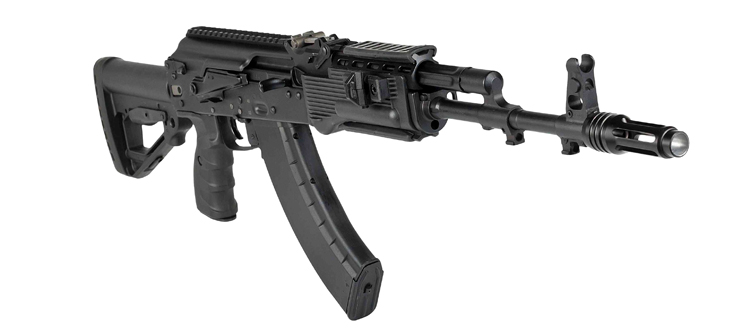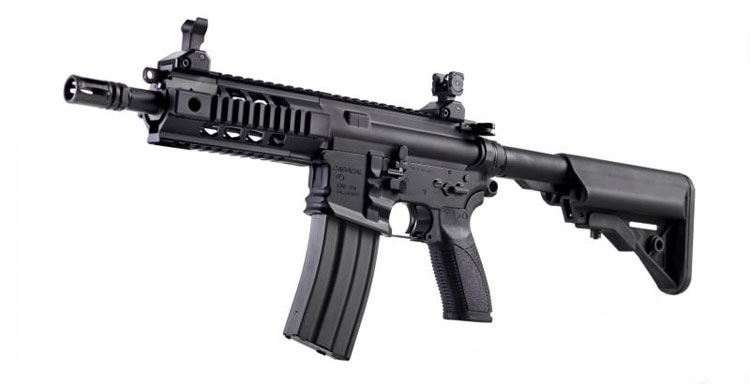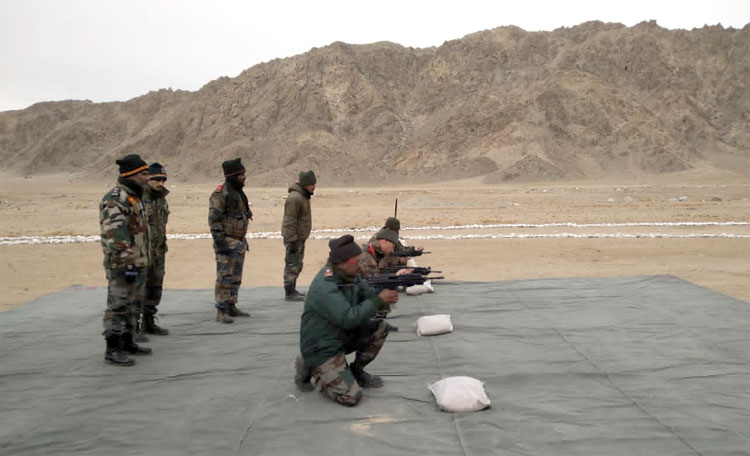INDIAN ARMED FORCES CHIEFS ON OUR RELENTLESS AND FOCUSED PUBLISHING EFFORTS

The insightful articles, inspiring narrations and analytical perspectives presented by the Editorial Team, establish an alluring connect with the reader. My compliments and best wishes to SP Guide Publications.

"Over the past 60 years, the growth of SP Guide Publications has mirrored the rising stature of Indian Navy. Its well-researched and informative magazines on Defence and Aerospace sector have served to shape an educated opinion of our military personnel, policy makers and the public alike. I wish SP's Publication team continued success, fair winds and following seas in all future endeavour!"

Since, its inception in 1964, SP Guide Publications has consistently demonstrated commitment to high-quality journalism in the aerospace and defence sectors, earning a well-deserved reputation as Asia's largest media house in this domain. I wish SP Guide Publications continued success in its pursuit of excellence.
- MoD initiates comprehensive review of Defence Acquisition Procedure 2020, pushes for defence reforms
- G7: The Swansong
- Kalinga Connect: South Asia to Polynesia
- Must Credit DRDO for Operation Sindoor, now what is next for defence R&D?
- The layered Air Defence systems that worked superbly, the key element of Operation Sindoor
- Operation Sindoor | Day 2 DGMOs Briefing
- Operation Sindoor: Resolute yet Restrained
Indigenous Carbines
 |
The Author is Former Director General of Information Systems and A Special Forces Veteran, Indian Army |

The Indian Army’s quest for a close quarter battle (CQB) carbine stretching over some 15 years may possibly fructify in another 3-4 years even though fast track procurement (FTP) to buy 93,895 such carbines from UAE-based firm Caracal was scrapped in September 2020 during the ongoing India-China standoff in Ladakh despite the Army making representations to the Chief of Defence Staff (CDS) by explaining the critical need for these carbines.
The Army has over 380 infantry and 63 Rashtriya Rifles (RR) battalions, for which the Army requires 4.6 lakh CQB carbines. The irony is that import of 93,895 CQB carbines was meeting only part of Army’s requirement needed urgently for equipping troops facing the PLA and Pakistani army at this juncture. Concurrent news reports indicated that a request for proposal (RFP) to manufacture 4.6 lakh CQB carbines under ‘Make in India’ is likely to be issued in 2021. Media quoting a government official stated that four to five foreign companies, including Caracal have expressed interest in the CQB carbine project and they can tie-up with Ordnance Factory Board (OFB) or private companies in India.
It is unlikely that government will agree to any joint venture (JV) of an original equipment manufacturer (OEM) partnering with a private company, as was indicative from the Indo-Russian JV for production of AK-203 assault rifles. The OFB and its ordnance factories need a complete overhaul because of which the calls for corporatisation of the OFB have been raised since past many years. This has also been recommended by multiple government-appointed studies. However, if this does happen, only cosmetic changes are likely because government fears their workers unions affiliated to various political parties who have no compunctions to go on strike even during the standoff in Ladakh. Therefore, the government is going in for subordinating private companies and foreign OEMs to the OFB to keep the latter going in its current state.

Following the above, the matter was reportedly raised by the UAE embassy in New Delhi since the deal with Caracal had been pending since 2018. Caracal issued a statement on September 23 that it had already identified the required land, facility and local partners to commence the production immediately. More importantly, the firm said that over 20 per cent of the components fitted on the CAR 816 carbines are already made in India and is making commitment to fully manufacture the rifles in the India under the ‘Make in India’ initiative. Besides, it has also promised transfer of technology (ToT). CEO of Caracal also said that his firm was awarded the Close-Quarter Carbine contract in 2018 to supply the Indian Army with the CAR 816 after having undergone a rigorous selection process, which is true. It is quite likely that the issue may have also come up for discussion also during the recent visit to the UAE by Indian Army Chief General M.M. Naravane.
On December 10, 2020, reports emerged that the Defence Research and Development Organisation (DRDO) has claimed it has successfully tested a 5.56x30mm protective carbine designed by it, clearing its way for induction into the Armed Forces. DRDO says it designed the Joint Venture Protective Carbine (JVPC) and the latest tests were the “final phase of user trials”, with the final leg carried out in extreme temperature conditions in the summer and high altitudes in the winter. According to media, a Ministry of Defence (MoD) statement says, “The JVPC has successfully met the stringent performance criteria of reliability and accuracy in addition to quality trials conducted by the Director General of Quality Assurance (DGQA)”.

Defence Minister Rajnath Singh had unveiled the 5.56x30mm JVPC at Lucknow in February this year during DefExpo 2020. DRDO Chairman congratulated the defence scientists, user team, and all the public and private agencies involved in manufacturing the JVPC. The DRDO statement also says, “The weapon has already passed the Ministry of Home affairs (MHA) trials and procurement action is initiated by the Central Armed Police Forces (CAPF) and various state police organisations.”
The JVPC is reportedly a gas-operated semi bull-pup automatic weapon having more than 700 rpm rate of fire. The effective range of the carbine is more than 100 metres and weighs about three kilograms with key features like high reliability, low recoil, retractable butt, ergonomic design, single hand firing capability, and multiple Picatinny rails. The carbine has been reportedly designed by Armament Research and Development Establishment (ARDE) at Pune and the weapon is manufactured at the OFBs Small Arms Factory at Kanpur while the ammunition is produced at Ammunition Factory at Khadki, Pune. The Carbine reportedly also meets the Army’s General Staff Qualitative Requirements (GSQR).
From the above it appears that Caracal is not involved in manufacture of the JVPC though Chairman DRDO did mention “private agencies”. But it is not clear whether the Army was involved at all in user trials of the JVPC. Since DRDO has specifically mentioned JVPC passing MHA trials and procurement action already initiated by CAPF and police organisations, it is possible that a twin approach is contemplated – Caracal’s CAR 816 or another under ‘Make in India’ for the Army and JVPC for CAPF and police forces? This could be because of large cumulative requirements; where the Army needs 6.4 lakh CQB carbines, the combined requirement of CAPF and police forces of all state may be at least double of that. On the other hand, the Caracal carbine may be dumped altogether – similar to the FICV practically dumping the private sector.
However, if a new RFP is to be issued to meet Army’s requirement of CQB carbines, ignoring that the contract that was awarded to Caracal in 2018 in order to include the JVPC, then it will likely amount to further delays which can hardly be specified with the bureaucratic red tape. In such case new carbines may start getting fielded in CAPF-police forces much before the Army.





